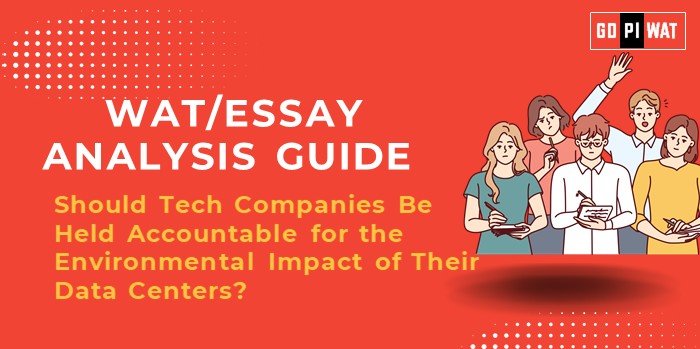Algorithms And Mass Violence: Holding Tech Companies Accountable

Table of Contents
The Role of Algorithms in Spreading Hate Speech and Misinformation
Algorithms, designed to maximize user engagement, often prioritize sensational and divisive content, inadvertently amplifying hate speech and misinformation. This creates a dangerous feedback loop, with potentially devastating consequences.
Amplification of Extremist Content
Algorithms prioritize content that generates high engagement, often leading to the amplification of extremist views. This has several serious implications:
- Increased visibility of extremist groups and ideologies: Extremist content, previously relegated to the fringes of the internet, gains significant traction through algorithmic promotion, reaching wider audiences and potentially radicalizing individuals.
- Echo chambers and filter bubbles reinforcing biases: Personalized content feeds create echo chambers where users are primarily exposed to information confirming their existing beliefs, reinforcing biases and making them more susceptible to extremist ideologies.
- Difficulty in identifying and removing harmful content promptly: The sheer volume of content and the speed at which it spreads online makes it challenging for platforms to identify and remove harmful material quickly enough to prevent its dissemination. This lag time can be critical in preventing violence.
Personalized Hate: Targeted advertising and personalized content feeds can contribute to the radicalization of individuals by exposing them to extremist viewpoints aligned with their pre-existing biases. This targeted approach is particularly dangerous:
- Algorithmic filtering creating echo chambers leading to radicalization: Algorithms tailor content to individual preferences, creating echo chambers that reinforce extremist views and isolate users from opposing perspectives, leading to radicalization.
- Micro-targeting of vulnerable populations with hateful propaganda: Sophisticated algorithms allow for the micro-targeting of specific demographics and individuals with tailored hate speech and propaganda, making them particularly vulnerable to manipulation and extremist recruitment.
- Lack of transparency in algorithmic decision-making processes: The lack of transparency surrounding how algorithms operate makes it difficult to understand how extremist content is amplified and to hold tech companies accountable for their role in facilitating its spread.
The Responsibility of Tech Companies
Tech companies have a significant responsibility in mitigating the harms caused by their algorithms. This responsibility encompasses several key areas:
Duty of Care
Tech companies possess a moral and potentially legal duty of care to prevent the misuse of their platforms for spreading hate speech and inciting violence. This requires proactive measures:
- Implementing robust content moderation systems: Investing in advanced technologies and human resources to effectively identify and remove hate speech, misinformation, and other harmful content.
- Investing in AI and machine learning to detect hate speech and misinformation: Leveraging AI and machine learning to improve the speed and accuracy of content moderation, catching harmful content before it reaches a wide audience.
- Proactive identification and removal of harmful content: Moving beyond reactive measures to proactively identify and remove potentially harmful content before it escalates into violence.
Transparency and Accountability
Greater transparency in algorithmic design and decision-making is essential for holding tech companies accountable:
- Openly sharing information about how algorithms work: Providing clear and accessible explanations of how algorithms operate, including how they prioritize and rank content.
- Independent audits of algorithmic systems: Regular independent audits of algorithmic systems to ensure they are not inadvertently amplifying hate speech or misinformation.
- Establishing clear lines of responsibility for content moderation: Defining clear roles and responsibilities for content moderation and establishing mechanisms for accountability when failures occur.
Collaboration and Regulation
Effective solutions require collaboration among tech companies, governments, and civil society organizations:
- Development of industry-wide standards for content moderation: Establishing common standards and best practices for content moderation across the tech industry.
- International cooperation on combating online hate speech: International cooperation to address the cross-border nature of online hate speech and misinformation.
- Legislation addressing algorithmic bias and accountability: Implementing legislation to address algorithmic bias and hold tech companies accountable for the harms caused by their algorithms.
Case Studies of Algorithmic Involvement in Mass Violence
Several real-world events highlight the role algorithms played in spreading hate speech and misinformation, contributing to violence. Analyzing these events reveals critical lessons:
- The 2018 Christchurch mosque shootings demonstrated how algorithms amplified extremist videos and facilitated the spread of hate speech, contributing to the radicalization of the perpetrator and potentially inspiring others.
- The Rohingya crisis in Myanmar saw the spread of misinformation and hate speech on social media, fueled by algorithmic amplification, contributing to widespread violence and displacement.
- The January 6th Capitol riot in the US saw the use of social media platforms to organize and coordinate the events, highlighting the potential for algorithms to facilitate real-world violence.
These examples demonstrate the urgent need for proactive measures to prevent similar tragedies.
Moving Forward: Solutions and Strategies
Addressing the issue of algorithms and mass violence requires a multi-pronged approach:
Improved Algorithm Design
Algorithms should be redesigned to prioritize safety and well-being over engagement metrics:
- Focus on promoting constructive dialogue and reducing polarization: Designing algorithms that promote respectful communication and reduce the spread of divisive content.
- Development of algorithms that detect and flag harmful content more effectively: Continuously improving AI and machine learning technologies to enhance the detection and flagging of harmful content.
- Prioritizing human oversight in content moderation: Maintaining a significant role for human review and judgment in content moderation to address the limitations of automated systems.
Media Literacy and Critical Thinking
Educating users about critical thinking and media literacy is crucial to combatting the spread of misinformation:
- Developing educational programs on media literacy: Implementing comprehensive media literacy programs in schools and communities to equip individuals with the skills to critically evaluate information online.
- Promoting critical thinking skills to combat misinformation: Encouraging critical thinking skills to help individuals identify and resist the influence of biased or manipulative information.
- Encouraging responsible online behavior: Promoting responsible online behavior, including respectful communication and responsible content sharing.
Conclusion
The relationship between algorithms and mass violence is complex and multifaceted. While algorithms themselves are not inherently harmful, their design and application can have devastating consequences when used to spread hate speech and misinformation. Tech companies bear a significant responsibility to mitigate these risks. By improving algorithm design, promoting transparency and accountability, and collaborating with governments and civil society organizations, we can work towards a future where technology empowers positive change and helps prevent mass violence. Holding tech companies accountable for the impact of their algorithms is not just ethically imperative but also crucial for safeguarding our societies. We must continue to demand greater transparency and responsibility from tech companies regarding their role in combating algorithms and mass violence. Let's work together to ensure technology serves humanity, not fuels hatred and violence.

Featured Posts
-
 France Vietnam Des Solutions Innovantes Pour Une Mobilite Durable
May 30, 2025
France Vietnam Des Solutions Innovantes Pour Une Mobilite Durable
May 30, 2025 -
 San Diego Inclement Weather Program Details For Tonight
May 30, 2025
San Diego Inclement Weather Program Details For Tonight
May 30, 2025 -
 Metas Future Under A Trump Administration
May 30, 2025
Metas Future Under A Trump Administration
May 30, 2025 -
 Problemas Ticketmaster Hoy 8 De Abril Grupo Milenio Reporta
May 30, 2025
Problemas Ticketmaster Hoy 8 De Abril Grupo Milenio Reporta
May 30, 2025 -
 A69 Nouveau Rebondissement Apres L Annulation Du Chantier L Etat Agit
May 30, 2025
A69 Nouveau Rebondissement Apres L Annulation Du Chantier L Etat Agit
May 30, 2025
Latest Posts
-
 Early Start To Fire Season In Canada And Minnesota
May 31, 2025
Early Start To Fire Season In Canada And Minnesota
May 31, 2025 -
 Crews Battle Out Of Control Wildfires In Eastern Manitoba
May 31, 2025
Crews Battle Out Of Control Wildfires In Eastern Manitoba
May 31, 2025 -
 The Tour Of The Alps A Look At Team Victoriouss Chances
May 31, 2025
The Tour Of The Alps A Look At Team Victoriouss Chances
May 31, 2025 -
 Canadian Red Cross Response To Manitoba Wildfires Donate And Volunteer
May 31, 2025
Canadian Red Cross Response To Manitoba Wildfires Donate And Volunteer
May 31, 2025 -
 Analysis Team Victorious At The Tour Of The Alps
May 31, 2025
Analysis Team Victorious At The Tour Of The Alps
May 31, 2025
